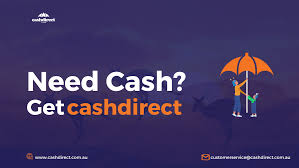Financial needs often arise without warning, making quick access to funds a necessity for many individuals. Whether it’s for covering unexpected bills, repairing a vehicle, or managing urgent home expenses, a cash loan can provide a timely solution. For residents looking for Quick Car Loans in Perth or simple financial support, there are straightforward lending options available that don’t require complex paperwork or long waiting periods. This outlines how to obtain a cash loan with low effort, with a special focus on accessible car loan options in Perth.

Understanding What a Cash Loan Is
A cash loan is a short-term lending option that provides borrowers with quick access to money, usually for emergency or personal use. Unlike traditional bank loans, these are designed for speed and minimal documentation. For people in need of Quick Car Loans in Perth, these types of loans can also be used to finance vehicle purchases or urgent car-related expenses.
Cash loans are typically unsecured, meaning they don’t require the borrower to provide assets as collateral. This makes them particularly useful for individuals who may not own property or other high-value items. The flexibility of use is another benefit — funds can be allocated for any purpose the borrower sees fit.
Who Can Apply for a Cash Loan?
Eligibility requirements for cash loans are generally minimal compared to traditional credit products. Applicants typically need to:
- Be over the age of 18
- Provide proof of income or employment
- Present valid identification
- Hold a functional bank account
For Quick Car Loans in Perth, some lenders may ask for additional vehicle-related information, especially if the loan is being used to purchase a car. In such cases, details like the make, model, and year of the car may be required.
Steps to Apply for a Cash Loan
Applying for a cash loan is usually a simple process that can be completed online or in person, depending on the lender. The steps generally include:
1. Choose a Loan Amount
Decide how much money you need. It’s important to borrow only what’s necessary to avoid high repayment amounts.
2. Complete an Application Form
This usually involves providing personal and financial details. If you’re applying for Quick Car Loans in Perth, you may need to specify your vehicle-related needs as well.
3. Submit Required Documents
Most lenders require documents such as ID, proof of income, and bank statements. These help verify your ability to repay the loan.
4. Wait for Approval
Once submitted, applications are reviewed — sometimes within hours. Many lenders offer same-day approval depending on the time of submission and the clarity of the documents provided.
5. Receive the Funds
Once approved, the loan amount is typically transferred directly to your bank account. Some services even provide cash on the spot.
Advantages of Getting a Cash Loan
Fast Processing
One of the key advantages of cash loans is how quickly they can be processed. This is particularly useful for those facing time-sensitive financial issues, such as needing Quick Car Loans in Perth to finalize a vehicle purchase.
Minimal Requirements
These loans are ideal for those without perfect credit histories or who lack substantial documentation. Since the application is basic, the approval process is streamlined.
No Restriction on Usage
Borrowers are not limited in how they use the funds. Whether it’s to pay bills, cover medical expenses, or manage car repairs, the choice is entirely up to the individual.
Flexible Repayment Options
Repayment terms are often customizable based on the borrower’s ability to repay. Terms can vary from a few weeks to several months, making it manageable for different financial situations.
Key Considerations Before Borrowing
While cash loans offer flexibility and fast access to funds, borrowers should be cautious and well-informed before taking on any financial obligation. Here are a few things to keep in mind:
- Interest Rates: These can vary widely depending on the lender and the loan amount.
- Repayment Schedule: Ensure you understand when and how repayments are to be made.
- Loan Terms: Read the full terms and conditions before signing any agreement.
- Total Cost of the Loan: Calculate the total amount you’ll need to repay, including any fees.
For Quick Car Loans in Perth, ensure the loan you select is structured in a way that suits both your current and future financial outlook.
Why Quick Car Loans in Perth Are Popular
Car-related expenses are among the most common reasons individuals seek cash loans. Whether it’s buying a second-hand car, repairing an existing vehicle, or covering registration costs, Quick Car Loans in Perth provide a direct path to resolving transportation needs without delay.
Many lenders offer car-specific loans tailored to the local market, with terms that consider vehicle condition and borrower income. This focus on practicality makes these loans a go-to solution for those needing fast car financing.
Using Technology to Simplify Loan Access
The integration of digital platforms in lending has made it easier than ever to access loans. Many financial service providers now offer online applications and digital document uploads, cutting down on the time and effort required.
These platforms also allow borrowers to:
- Compare interest rates
- Track their loan status
- Manage repayments with automated reminders
This not only improves transparency but also supports responsible borrowing.
Conclusion
Accessing a cash loan doesn’t have to be complicated. For individuals needing immediate financial assistance or looking for Quick Car Loans in Perth, there are effective solutions that combine speed, simplicity, and flexibility. These loans can bridge the gap during tough times or support urgent purchases like vehicles without extensive delays or administrative burdens.
Whether you need funds for unexpected expenses or to secure a vehicle quickly, cash loans offer a practical path forward. With the right information and a clear repayment strategy, borrowers can make the most of these financial tools while maintaining stability and control.







